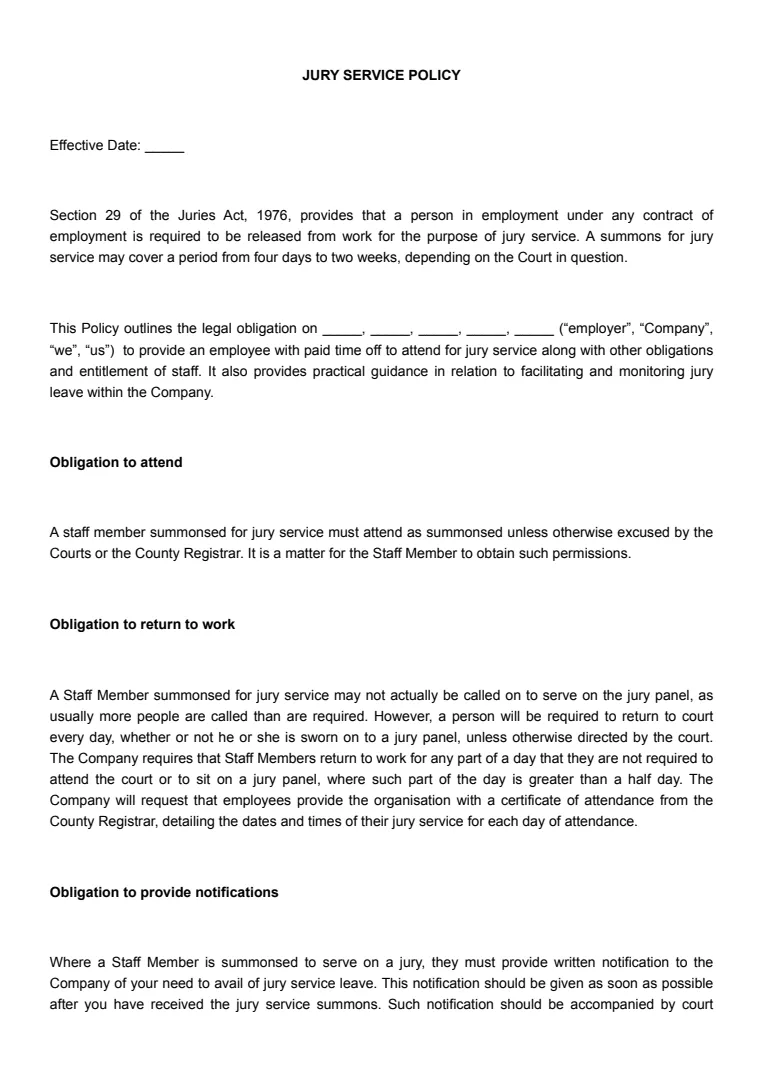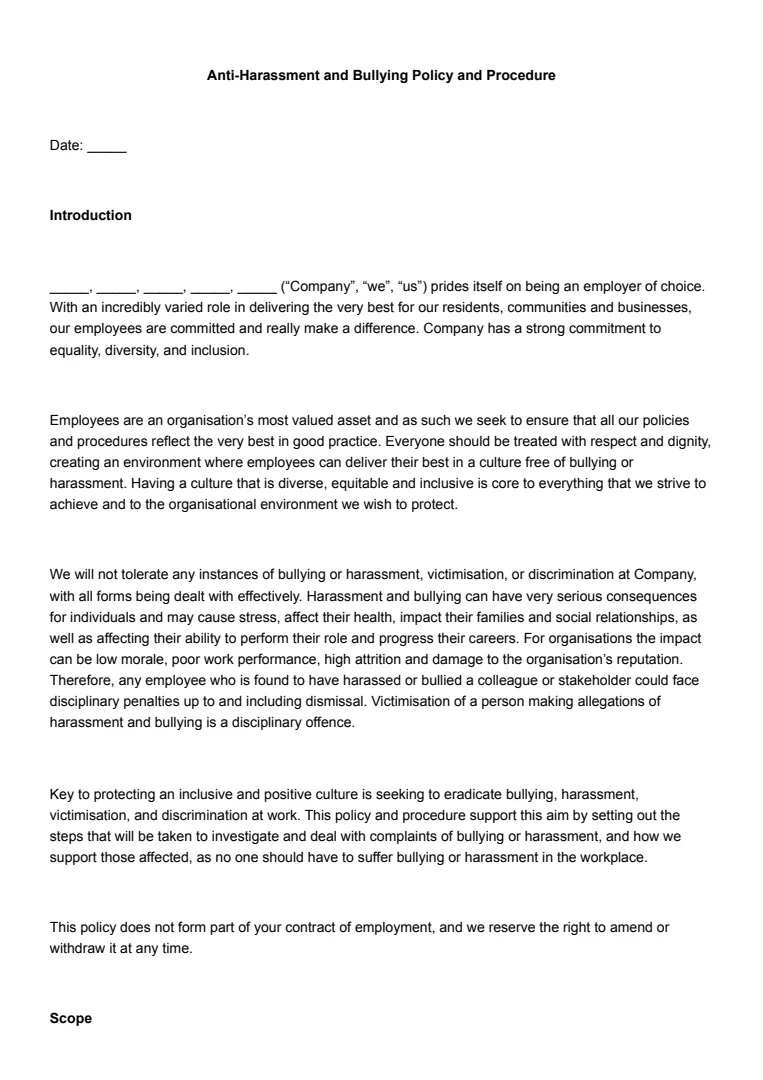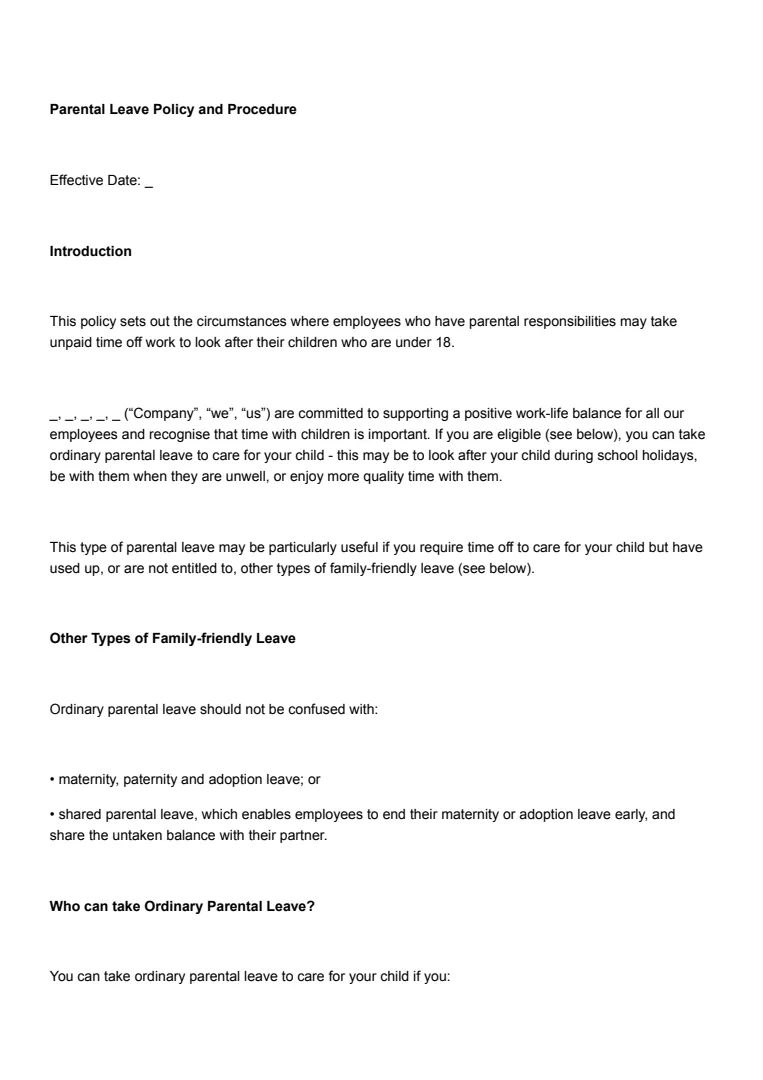What Is an Adoption Leave Policy?
An adoption leave policy is a formal HR document that sets out an organisation’s approach to granting leave and pay for employees adopting a child. It outlines eligibility requirements, statutory entitlements, and any additional benefits the employer provides.
In the UK, statutory adoption leave (SAL) entitles qualifying employees to up to 52 weeks of leave, which may start up to 14 days before the expected date of placement. This entitlement applies whether adopting through a UK agency, an overseas adoption, or in certain fostering-to-adopt situations. The policy should also reflect obligations under the Employment Rights Act 1996 and the Paternity and Adoption Leave Regulations 2002, ensuring it aligns with current employment law and avoids discriminatory practices.
Employers can choose to provide enhanced benefits beyond the statutory minimum, such as extended paid leave or flexible return-to-work arrangements, but these must be set out clearly to manage expectations.
When Should You Use an Adoption Leave Policy?
Here, we clarify the instances in which an adoption leave policy should be used.
1. When an Employee Adopts Through a Registered Agency
This is the most common circumstance for adoption leave, and a well-drafted policy provides employees with clarity on the entire process from start to finish. It should explain how the statutory adoption leave entitlement works in practice, when leave can begin, and what documentation is needed, such as a matching certificate issued by the adoption agency.
The policy should also outline how to request leave, how much notice is required, and the point of contact for questions. Providing this detail in advance helps employees feel secure about taking time away from work during a major life transition, while also ensuring the employer can plan operationally for their absence.
Expert Tip:
“Incomplete or late documentation is the most common reason for delays in approving adoption leave. Make sure your policy provides a checklist of required forms and certificates so employees can prepare well in advance.”
2. For Overseas Adoptions
International adoptions typically require more preparation and involve additional legal and logistical complexities. Employees may face extended timelines for immigration processing, court proceedings, and travel to the child’s country of origin. A comprehensive policy should account for these factors by clarifying how statutory adoption leave aligns with the official matching date and any Home Office requirements.
It should also cover situations where employees need to spend extended periods abroad before the placement is finalised. By addressing these issues in the policy, employers can avoid uncertainty and ensure employees know how their leave and pay entitlements apply in such unique circumstances.
Expert Tip:
“Overseas adoptions can take months longer than anticipated. Build flexibility into your policy so employees can adjust leave start dates if court proceedings or visa approvals are delayed.”
3. For Fostering-to-Adopt Arrangements
Fostering-to-adopt arrangements are designed to give a child a permanent home more quickly, but they create specific considerations for adoption leave. The start date for statutory leave may be triggered earlier than in traditional adoptions, and there may be an overlap between fostering responsibilities and adoption preparation.
The policy should clearly explain when leave officially begins in these cases and how it interacts with other types of family-related leave, such as parental leave or time off for dependants. Including these details ensures both the employee and employer can coordinate responsibilities and avoid confusion during the transition from foster care to adoption.
4. When Offering Enhanced Adoption Benefits
Many organisations choose to offer enhanced benefits to support employee wellbeing and demonstrate a commitment to family-friendly policies. This could include extra weeks of paid leave, topping up statutory pay to full salary for a certain period, or providing flexible return-to-work options.
If such enhancements are offered, the policy should explain them in clear terms, including any eligibility requirements or conditions, such as a minimum return-to-work period. Being transparent about enhanced benefits not only helps manage expectations but also strengthens employee loyalty and can position the organisation as an employer of choice in a competitive labour market.
How to Write an Adoption Leave Policy
Here’s a step-by-step guide to creating a robust adoption leave policy.
Step 1: Define Eligibility Criteria
Your policy should begin by setting out exactly who qualifies for adoption leave, making the criteria as clear and inclusive as possible. This includes confirming the requirement to adopt through an approved agency and stating any minimum length of continuous service an employee must have with your organisation.
You should explicitly note that eligibility applies equally to all employees regardless of gender, marital status, or sexual orientation, ensuring compliance with the Equality Act 2010. For clarity, provide examples of situations that qualify, such as domestic adoption, overseas adoption, and fostering-to-adopt, and those that do not, such as private adoptions not arranged through a recognised agency. The goal is to eliminate ambiguity so that employees know from the outset whether they are covered.
Step 2: Set Notice Requirements
Detail the specific notice periods employees must follow to qualify for adoption leave. Under UK law, at least 28 days’ notice is required before the intended start of leave, but your policy should also explain when and how this notice should be given, whether in writing, via an internal HR form, or through a digital HR system.
Outline the documents that must accompany the notice, such as the matching certificate issued by the adoption agency, and provide clear instructions on where and to whom they should be submitted. Including a named contact or department responsible for processing these requests ensures employees know who to approach and avoids delays in confirming leave arrangements.
Step 3: Detail Leave Entitlements
Explain the statutory entitlement to up to 52 weeks of adoption leave, broken into 26 weeks of ordinary adoption leave (OAL) and 26 weeks of additional adoption leave (AAL). Specify when the leave can start; up to 14 days before placement for domestic adoptions, or from the date the child enters the UK for overseas adoptions.
Clarify how adoption leave interacts with other types of leave, such as paternity leave or parental leave, and whether employees can change their planned start or end dates once leave begins.
Your policy should also explain the option of using Keeping-in-Touch (KIT) days, including the maximum allowed under law (10 days) and how these will be compensated, so employees can make informed decisions about staying engaged during their leave.
Expert Tip:
“Make sure your adoption leave policy aligns with other family leave policies in your handbook. Conflicting timelines or entitlements can create legal risks and employee grievances.”
Step 4: Explain Pay Provisions
Clearly outline the statutory adoption pay (SAP) entitlement, currently payable for up to 39 weeks at either the government-set rate or 90% of the employee’s average weekly earnings, whichever is lower. Provide details on how and when SAP will be paid, whether weekly, monthly, or in line with standard payroll cycles. If your organisation offers enhanced adoption pay, specify exactly what is provided, such as full pay for a set number of weeks, and explain any conditions for receiving it.
Conditions might include returning to work for a certain period after adoption leave or repaying a portion of enhanced pay if the employee leaves early. Being upfront about these terms avoids disputes and demonstrates fairness.
Expert Tip:
“If offering enhanced adoption pay, put all terms in writing, including repayment conditions. Disputes over repayment are one of the most common post-leave conflicts.”
Step 5: Include Return-to-Work Arrangements
The policy should reassure employees about their right to return to the same role after adoption leave or, if that’s not possible, to a suitable alternative role on the same terms and conditions. Outline the process for notifying the employer of an early return, including how much notice is required, usually eight weeks under UK law.
Consider including guidance on requesting flexible working arrangements, phased returns, or temporary adjustments to duties to help employees balance their new parental responsibilities with work. By setting out these options in advance, you make it easier for employees to plan their return and for the business to accommodate it without disruption.
Legally.io’s free adoption leave policy template already includes all these clauses, saving you hours of drafting and reducing the risk of missing critical protections.
What Should an Adoption Leave Policy Contain?
It’s important that your adoption leave policy contains the following details:
- Purpose and scope – Define the policy’s aim and the employees it covers. This helps set the tone and ensures clarity on applicability.
- Eligibility criteria – Outline qualifying conditions, including service length and adoption type, and state that eligibility applies equally regardless of gender, marital status, or sexual orientation.
- Leave entitlement – Describe in detail the duration, start date options, and any flexibility in scheduling. Include information on KIT days and their pay.
- Pay entitlement – State statutory rates and when they are reviewed, plus any additional pay benefits provided by your organisation.
- Notice process – Include deadlines, required documentation, and the procedure for submitting a leave request.
- Return-to-work rights – Explain legal protections, re-employment rights, and available flexible working options.
- Legal compliance statement – Affirm that the policy meets or exceeds statutory requirements under current UK law.
Legal Tips for Adoption Leave Policies
The following are some helpful legal tips to bear in mind when creating and using adoption leave policies.
- Stay up to date with legislation – Review and update the policy annually to reflect changes in SAP rates or adoption leave rules.
- Include provisions for overseas adoption – Clearly address extended timelines and documentation requirements unique to international adoptions.
- Be explicit about enhanced benefits – If offering benefits beyond the statutory minimum, state these in precise terms and outline any conditions for eligibility.
- Avoid discriminatory language – Ensure your policy is inclusive and compliant with the Equality Act 2010.
- Reference applicable laws – Cite the Employment Rights Act 1996 and Paternity and Adoption Leave Regulations 2002, so employees know the policy is grounded in law.
Key Takeaways
An adoption leave policy is a critical HR document that provides employees with clarity, ensures compliance, and promotes a supportive workplace.
It sets out rights and responsibilities clearly, reducing the risk of misunderstandings.
By including clear eligibility rules, leave and pay entitlements, and return-to-work arrangements, employers can build trust and retain valuable staff.
Keeping the policy updated and inclusive ensures it remains legally compliant and aligned with best practices.
By using Legally.io’s well-structured, legally compliant adoption leave policy template for the UK, you can ensure clarity for both employers and employees.













